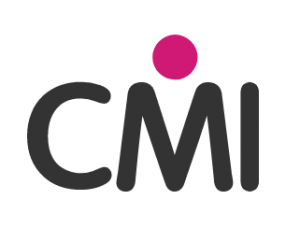
Have you ever been part of a high-performing team, where everyone worked together towards a shared set of goals, where everyone knew their role, and there was plenty of mutual respect, cooperation and collaboration? Do you remember looking forward to going to work every day?
Or have you been on the other end of the spectrum, working on the team from hell, that was plagued by mistrust and conflict, where you counted down the days until you could escape on annual leave?
Most people will have experienced both, because the truth is, as a business owner or manager, you can never really know how well (or not) people will work together until you have to build a team, and it’s often a case of trial and error.
But building a high-performing team is about more than just pulling a group of people together who have the right skills. You need to develop and nurture their strengths, encourage positive behaviours, and create a real sense of trust and collaboration.
So how do you create a high-performing team and what are the benefits for you and your team?
What is a high performing team?
High-performing, effective teams share some characteristics:
They work towards shared goals
A high-performing team is unified by clearly defined, shared goals that resonate with the values of each team member. These goals are also closely linked to the business goals. This shared vision of what can be achieved underpins everything they do.
They understand how they fit into the bigger picture
When your team members understand the part they play in helping the business realise its mission and goals, they’ll be more engaged and productive. A high-performing team never loses sight of its ‘why.’
They are diverse
The best teams are made up of people from different backgrounds with varied skillsets and personalities. Diversity offers more potential for creativity and innovation, as well as a wider talent pool to recruit from.
They are smaller and more flexible
Smaller teams generally have better change agility generally than larger teams.

Everyone understands their roles and responsibilities
In a high-performing team, everyone has clearly defined roles and responsibilities. Knowing who has the authority for what prevents conflict and confusion, ensures deadlines are met and keeps everyone accountable.
They communicate clearly
Crossed wires and poor communication causes conflict and it hurts performance. But if everyone knows how and where to communicate, and who they need to communicate with, this can be avoided. Never underestimate the importance
They trust and respect each other
Trust is the foundation of a high-performing team. On a high-performing team, each team member values and trusts their co-workers, and they respect each other’s opinions. They recognise that everyone is different, but they know that their differences make them stronger, not weaker. In this kind of workplace, you’ll see more collaboration, idea-sharing, and innovation. Nobody is afraid to speak up.
They celebrate their wins together
You know the saying, ‘there’s no I in team’? It’s true. Success is always the result of a team effort. In teams where wins are celebrated and everyone’s contribution is recognised, people feel more valued and they’ll go the extra mile.
They never stop learning and growing
There is always room to grow, even for a high-performing team. High performing teams embrace feedback and they always learn from mistakes. They want to grow and develop, and they want to keep on achieving more, individually and collectively.
How do you create a high-performing team?
So keeping in mind what a high-performing team looks like, how do you create one? Well, a good place to start is by creating a working environment and culture where employees feel a sense of team spirit, and of being appreciated, respected, and valued.
Here’s how:
- Make employees feel they can be open and contribute their ideas without fear of being dismissed or ridiculed.
- Create a workplace where people are inspired and understand how their role fits into the bigger picture. This creates a sense of belonging, and of contributing to something bigger than themselves.
- Create a shared sense of purpose. Share clearly defined goals and the business vision with your team and give them something to get behind.
- Communicate with your team clearly and effectively. Create processes and set expectations for communication. This is particularly important if you’re managing a remote team. Clear communication processes help you get the right information to the right people and ensures that nothing important gets lost in translation.
- Take advantage of one-on-ones to check in with team members on their progress, identify key priorities, and ensure their work aligns with the overall team goals. This helps create a shared sense of purpose and ensures the team is pulling together in the same direction to drive performance.
- Keeping the last point in mind, once you’ve created a sense of togetherness and of being a team, it’s important when you’re recruiting new employees, to make sure that their attitude and values are a good fit for the team. If it’s not, this could spell trouble.
- Recognise when employees have performed well, and specify exactly what you were pleased with. Employees will perform better if they know that their hard work is appreciated.
- Always measure progress towards goals. If employees are continuously working hard with no obvious end goal or outcome, they’ll soon lose motivation. High-performing teams constantly measure and evaluate progress and outcomes. This is how they constantly improve.
- Be prepared to coach or mentor people so they reach their full potential. Maybe your team is full of great employees, except one, who could be brilliant, but for some reason or another, never quite manages to stretch themselves that little bit more. Maybe all they need is some coaching and encouragement to reach their full potential. They will benefit, and so will the business.
- Invest in employee development. A high-performing team always wants to improve, grow, and learn from mistakes, so make sure you capitalise on that. Help your team members identify development opportunities that will help them and the business reach their goals. Team members who have opportunities to develop will be more motivated, empowered, and feel better equipped for success in their roles.

Coaching Your Team to High Performance
As a business owner or manager, it’s your job to nurture your team to high performance. Coaching is all about building relationships with your team members, giving them constructive feedback, listening to them, and pointing them in the right direction so they fulfil their potential. So how can you coach your team to high performance and success?
Develop your own emotional intelligence
A high-performing team starts with you. You need to be able to be genuine with people, demonstrate empathy, and appreciate viewpoints that are different from your own. This develops trust and a sense of working together as a team.
Get to know your team members’ strengths
Every team member brings something different to the team. It’s your job to identify each person’s strengths and help them develop and use them more in their role. If people are using their strengths every day, they’ll be more engaged and you’ll see a huge difference in team performance.
Understand what makes people tick
Getting the best out of your people is not just about understanding their strengths, it’s about knowing what makes them tick. So have conversations about where they see themselves in the future, the kind of tasks they love doing, and how they’d like to develop.
Give them more autonomy and responsibility
Once you better understand your team members’ strengths and the kind of tasks they love doing, empower them. Give them responsibilities that will help them develop particular skills. This could be leading a project or taking the lead on a presentation to a client. Anything that shows them that you have confidence in their abilities.
Give constructive feedback
A high-performing team uses feedback to learn, develop, and improve. Without effective feedback, your team doesn’t know how they’re doing, how they can improve, or build on what’s going well. This can affect performance and engagement. Make sure you recognise achievements and contributions in feedback too.
Understanding the Benefits of a High-Performing Team
The benefits of high-performing teams
If you have worked on a high-performing team, or you manage one, you’ll know the buzz you get from it. Mutual respect. TheY push each other to be better. Working towards shared goals for the greater good. There are so many benefits.
The benefits for employees
Employees who work on high-performing teams are more motivated and engaged, and there are no feelings of being disheartened because they’re carrying people who aren’t pulling their weight. Everyone is pulling in the same direction and this allows them to just enjoy their jobs, which is half the battle in any career.
The benefits for business owners and managers
High-performing teams are a lot more independent and they don’t need you to constantly spoon-feed them information or deal with problems. They’re also a lot happier and more engaged at work, so you’ll find that you’re not having to deal with conflict and performance issues very often at all. How would it feel to get your time back so you can focus on the things that really matter (and actually have a life outside of work?)

What About Building High-Performing Remote Teams?
Many managers now have to manage remote teams. Remote teams can be high-performing teams, but there are obvious obstacles that need to be navigated, such as how to keep communication clear and flowing, and keeping people engaged, productive, and on track.
You can steer your team towards high-performance when they are working remotely by:
- Setting clear goals, targets and deadlines so everyone is on the same page. If you don’t already, using task/project management software like Trello or SharePoint can really help with this.
- Checking in with them regularly. Have regular team meetings and 1:1 catch-ups with individual team members where you don’t just talk about work. Ask how they are doing and whether there’s anything they need your support with. When people feel appreciated and cared about, they perform better.
- Remember to give praise and feedback. This might be done regularly in the context of the usual office environment, but when everyone’s working from home and has their head down, plodding on, it can be easy to forget to thank your team members for a job well done, especially in these hard times. Saying thank you goes a long way to boost morale and entice people to work hard for you.
The thing to remember about building a high-performing team is that it doesn’t happen overnight. But when you bring together the right mix of people and you nurture their skills and strengths, the benefits are well worth your effort.
Do you need help with business or employee issues?
I help Business Owners and Managers just like you to feel confident in their team and content with the way their business and team runs every day. My goal is to create a less frazzled life for you by offering you and your team mentoring, expert support, and workshops tailored completely to your needs.
Book a call to find out how I can help you.
Want to read more on high-performing teams then this blog has more on the topic





